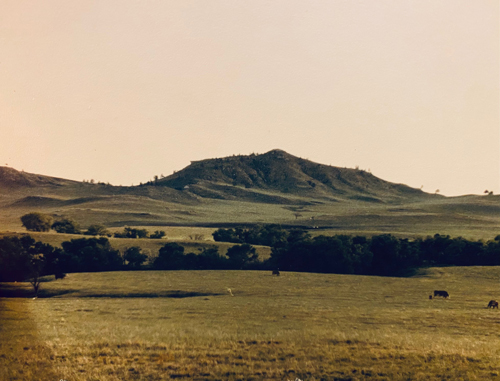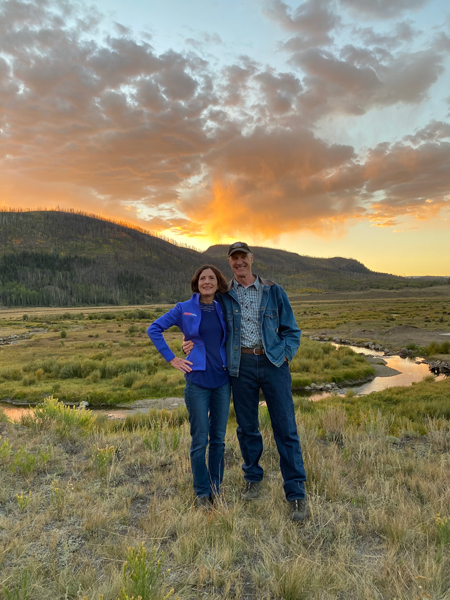
| |
Once it was full of cedar trees that were cut and sold for fence post. By the time I came along they were all gone except for the stumps. My dad told me the cedar stumps were a hundred years ago. We as a family used to climb to the top when we had company from out of state. Over the years when I would come home to visit my mother, she would ask if I was going up to the butte? And the answer was always yes. Many times as a teen I would spend a night up there where you're able to see for nearly fifty miles. It may not seem that monumental, but it has a ten-acre flat top. When I was in maybe 6th or 7th grade there were at least three golden eagle nests around it. From the summit you could look down into the pine trees and see the nesting eaglets. We would watch the parents hunt rabbit and prairie dogs. On clear full-moon nights you could see the badlands' white glow, and on a new moon so dark the Milky Way was bright you could see a thunderstorm a hundred miles away. At night the sound would travel a great distance: a coyote's howling or just the breeze on the grass. On windy days the grass would look like waves on the ocean. I used to set and think how many people have set and looked out at this view, because some of the bigger rocks had small markings on them. I took my son and daughter up there nearly twenty years ago and now it's my grandchildren's turn, but my youth is gone so it will probably be the last time I'll get to go up. When I was young it was grass as far you could see. Now it's covered in very small pine trees—not cedar—and it's plowed ground all around—farms have replaced the cattle ranches. Why is it that I think of this place as so inspirational? One night I woke from a dream that to this day I can remember like reality. I could fly, and that was long before I ever got on an airplane, and the views were exactly the same. I always anticipated my future from my secret spiritual perch and the offerings I left there. Copyright © 2020 Dwayne Wilcox. All rights reserved.
In the summer of 1979, Bart and I traveled to Alaska, a land that held great fascination for us. I fell in love with that place—the land and its people—and its grip has never let go. Living in Kodiak, Anchorage, Nome, and Fairbanks introduced me to the Native cultures, arts, and people of Alaska. Contemporary Native Alaskan art became my professional focus. Educational and employment opportunities caused us to leave the state, but I always imagined I would return to live there one day. That is, until Bart was killed in an accident and I was left unmoored, no longer feeling as though I had a place in the world, because he had been my home, and Alaska our place. Without him, where did I belong? I had to allow myself to emerge from the fog of grief and learn how to live again. I had to because I had two sons, aged 13 and 14 at the time of their father's death, and I needed to take care of them. Thankfully, despite the ups and downs of adolescence compounded by their own grief and emotional upheaval they are now both healthy, productive young men. It was shortly after being widowed that I began working at Dartmouth's Hood Museum of Art where I again became involved with Native arts and peoples. When Dwayne Wilcox and I met in April of 2009, he had just lost his mother days before, and my own grief was still perceptible. This shared emotional rawness, I believe, allowed him to open up to me, and to know that I could hear what he had to say. This was the beginning of our collaboration. Since then, I have found happiness again with my second husband Charlie, with whom I spend much of the year in Colorado and New Mexico, immersed once again in Native lands and cultures. And while all of us in this country occupy Native lands, in some locations this reality is more tangible, and it is to these places that I feel most connected. My place then is less about specific location and more about people. My place is with the people I love. That's where I live. Copyright © 2020 Karen Miller Nearburg. All rights reserved.
|

